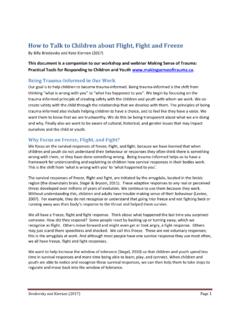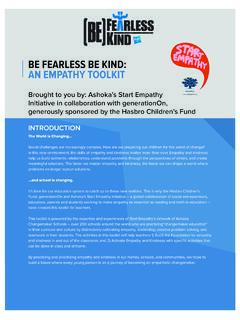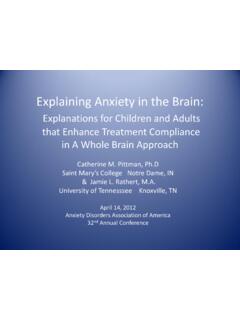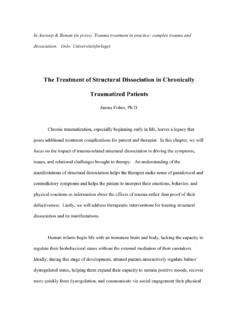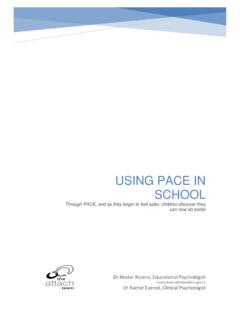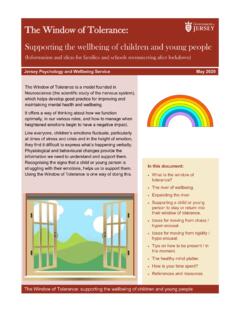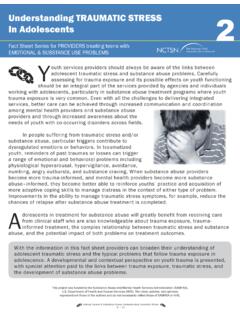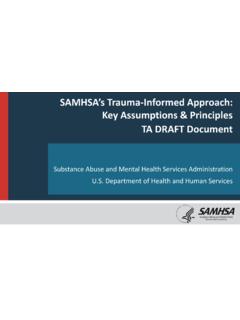To Children About Flight Fight And Freeze
Found 9 free book(s)How to Talk to Children about Flight, Fight and Freeze
makingsenseoftrauma.comHow to Talk to Children about Flight, Fight and Freeze By Billy Brodovsky and Kate Kiernan (2017) This document is a companion to our workshop and webinar Making Sense of Trauma: Practical Tools for Responding to Children and Youth www.makingsenseoftrauma.ca. Being Trauma-Informed in Our Work Our goal is to help children to become trauma-informed.
Tools for gathering the views of children and young people
education.gov.scothow they look when near staff or other children/young people e.g. relaxed, fidgety, uncomfortable; their primary response to stressful situations (fight, flight or freeze); engagement/disengagement with certain tasks/subjects; peer relationships; and strategies that children/young people use to help themselves.
BE FEARLESS BE KIND: AN EMPATHY TOOLKIT - Hasbro
www.hasbro.comfight, flight or freeze. The good news is that all children can be taught explicit strategies to learn how to manage their emotions. ACTIVITY: Settle Your Glitter Best for elementary school A favorite strategy (that works just as well on adults as children) is one we call “Settle Your Glitter.” To do this activity, you: 1.
Explaining Anxiety in the Brain - Anxiety and Depression ...
adaa.orgto Children •Models of brain and concrete illustrations •The amygdala as a “caveman” –Fight-flight-freeze response was (and can be) useful –Doesn’t have language •The cortex as a “professor” –Comes up with its own explanations •Who is the better ringmaster at the circus? –In emergencies? Other situations?
The Treatment of Structural Dissociation in Chronically ...
janinafisher.comHart et al, 2006). Equally, children have to depend upon their instinctive animal defense survival action system mobilizing hypervigilance, cry for help, fight and flight, freeze, collapse and submission responses to quickly inhibit exploration, social engagement, and regulating functions in order to ensure automatic self-protective behavior.
Using PACE in School - Oxfordshire County Council elections
www.oxfordshire.gov.ukMany children who have experienced trauma are vulnerable to experiencing ‘fight, fright or flight’ reactions in everyday situations which would not normally make children feel afraid. This reaction is not conscious, is completely involuntary and out of their control. In order for children to be ready to learn, however, they need to be in
The Window of Tolerance - Government of Jersey
www.gov.jeHyper-arousal results from the fight or flight response and is characterised by excessive activation/energy. It can present as difficulties concentrating, irritability, anger and angry outbursts, panic, constant anxiety, easily scared or startled, self-destructive behaviour, etc. Hypo-arousal results from the freeze / flop drop response where
Understanding Traumatic Stress in Adolescents Fact Sheet
www.isbe.netWhen fight, flight or freeze reactions are set in motion, the body prepares to respond . to threat by sending more resources (e.g., blood and oxygen) to vital organs and conserving resources in others. See the boxes below for a list of some of the physical sensations that occur at this time: Mental Response. Long-lasting Problems
SAMHSA’s Trauma-Informed Approach: Key Assumptions ...
www.nasmhpd.orgFIGHT –“Non-compliant, combative” OR –Struggling to regain or hold onto personal power FLIGHT –“Treatment resistant, uncooperative” OR –Disengaging, withdrawing FREEZE –“Passive, unmotivated” OR –Giving in to those in power . Factors Increasing Impact Early
